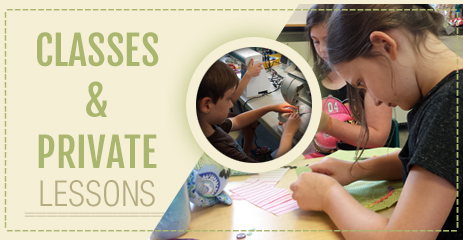Purchasing Your First sewing Machine
Many moms of my young clients ask me what kind of sewing machine to buy for their budding sewing enthusiasts. Parents want to encourage their kids to enjoy sewing but don’t want to spend too much money in case sewing is just a passing fancy. Understanding their concerns, I give them these basic tips:
1. One of the most important pieces of advice that I can give my parents is that if all possible, purchase your sewing machine from a reputable dealer. Purchasing from the dealer with any brand might be a little more expensive. However, you will also be paying for that dealer to provide you with any services that you may need over the life of your machine. And, many dealers offer a trade-up on a better mchine within the year of your purchase if your sewer should decide that he or she really likes sewing and wants more features to test their creativity
2. Machine prices start at about $100 and increase as more features are added. Once you have decided how much you can spend for your machine, then begin the process of shopping around to find the machine best suited for your sewer’s needs.
3. Machines will either be mechanical oe computerizzed. Mechanical machines have knobs and levers to turn or dial. Computerized machines usually will have a display panel and buttons to push to sew the different stitches
4. Consider the stitches your child might like to have for their sewing. Ask a sewer in your family or a sewing teacher what features they like having on their machines. The dealer will also be able to help. Some of the features that I like on my machine are:
6. Also remember to purchase the sewing tools like scissors, pins, extra bobbins, extra sewin machine needles in several sizes, good quality thrad, hand sewing needles, marking pencil, seam ripper, and tape measure that will allow your child to begin to sew.
7. When lessons fit into your busy schedule, continue to sign your child up for sewing lessons. There’s so much to learn and my young sewer’s love these classes where creativity flows and personal flare are woven into every project.
8. If you can’t get to classes, there are lots of great books for kids to read and have fun making the projects. One of my favorites is “We Love to Sew” by Annabel Wrigley. This book is one of C&T publishing books from their Fun Stitch Studio collection. All the books are fun and jam packed with projects to inspire your sewer and get them sewing up a storm. Learning to sew and loving it!
1. One of the most important pieces of advice that I can give my parents is that if all possible, purchase your sewing machine from a reputable dealer. Purchasing from the dealer with any brand might be a little more expensive. However, you will also be paying for that dealer to provide you with any services that you may need over the life of your machine. And, many dealers offer a trade-up on a better mchine within the year of your purchase if your sewer should decide that he or she really likes sewing and wants more features to test their creativity
2. Machine prices start at about $100 and increase as more features are added. Once you have decided how much you can spend for your machine, then begin the process of shopping around to find the machine best suited for your sewer’s needs.
3. Machines will either be mechanical oe computerizzed. Mechanical machines have knobs and levers to turn or dial. Computerized machines usually will have a display panel and buttons to push to sew the different stitches
4. Consider the stitches your child might like to have for their sewing. Ask a sewer in your family or a sewing teacher what features they like having on their machines. The dealer will also be able to help. Some of the features that I like on my machine are:
- Needle up and needle down- great for stopping and starting while sewing. The needle remains in the fabric so the fabric doesn’t move and my line of stitching remains uninterrupted. The needle must always remain down when the presser foot is lifted so that you don’t lose your place when sewing.
- Three Step Zig Zag- Standard on most machines, I like this stitch for finishing seams and it’s a great stitch for mending.
- Decorative Stitches–Some decorative stitches are nice for embellishment. Used with decorative threads, these stitches are great to personalize projects.
- Alphabet- Granted you’ll have to be probably in the $300+ range to get this feature but kids and grown-ups alike love to personalize their projects. It’s just fun to do!
6. Also remember to purchase the sewing tools like scissors, pins, extra bobbins, extra sewin machine needles in several sizes, good quality thrad, hand sewing needles, marking pencil, seam ripper, and tape measure that will allow your child to begin to sew.
7. When lessons fit into your busy schedule, continue to sign your child up for sewing lessons. There’s so much to learn and my young sewer’s love these classes where creativity flows and personal flare are woven into every project.
8. If you can’t get to classes, there are lots of great books for kids to read and have fun making the projects. One of my favorites is “We Love to Sew” by Annabel Wrigley. This book is one of C&T publishing books from their Fun Stitch Studio collection. All the books are fun and jam packed with projects to inspire your sewer and get them sewing up a storm. Learning to sew and loving it!

 Laces & Trims
Laces & Trims Patterns
Patterns
 Books & Magazines
Books & Magazines Dolls
Dolls Galleria
Galleria
